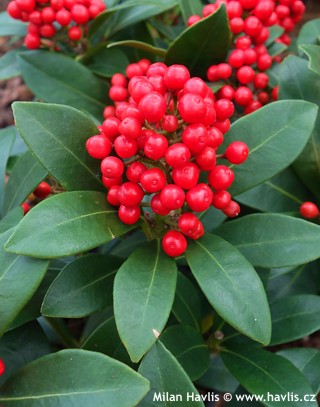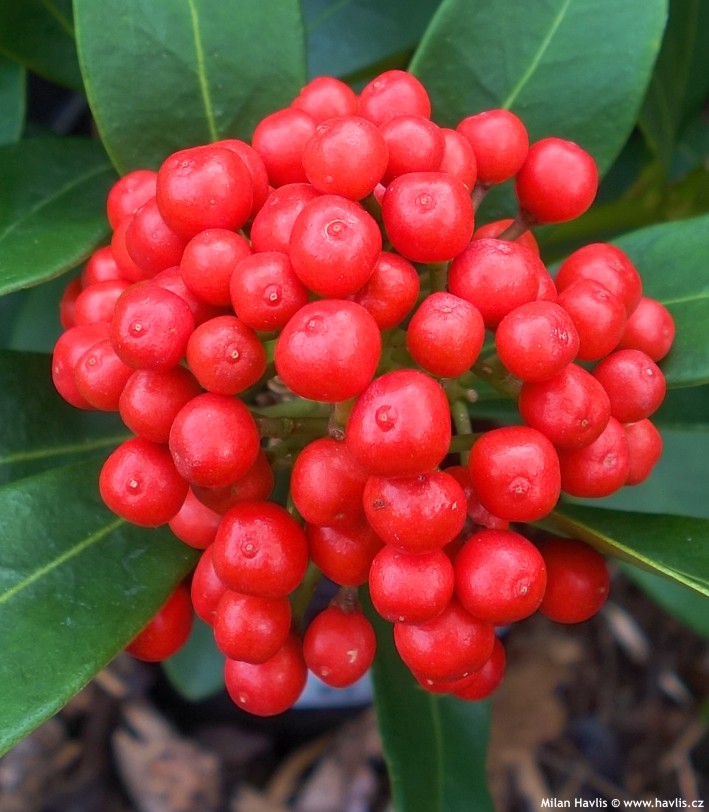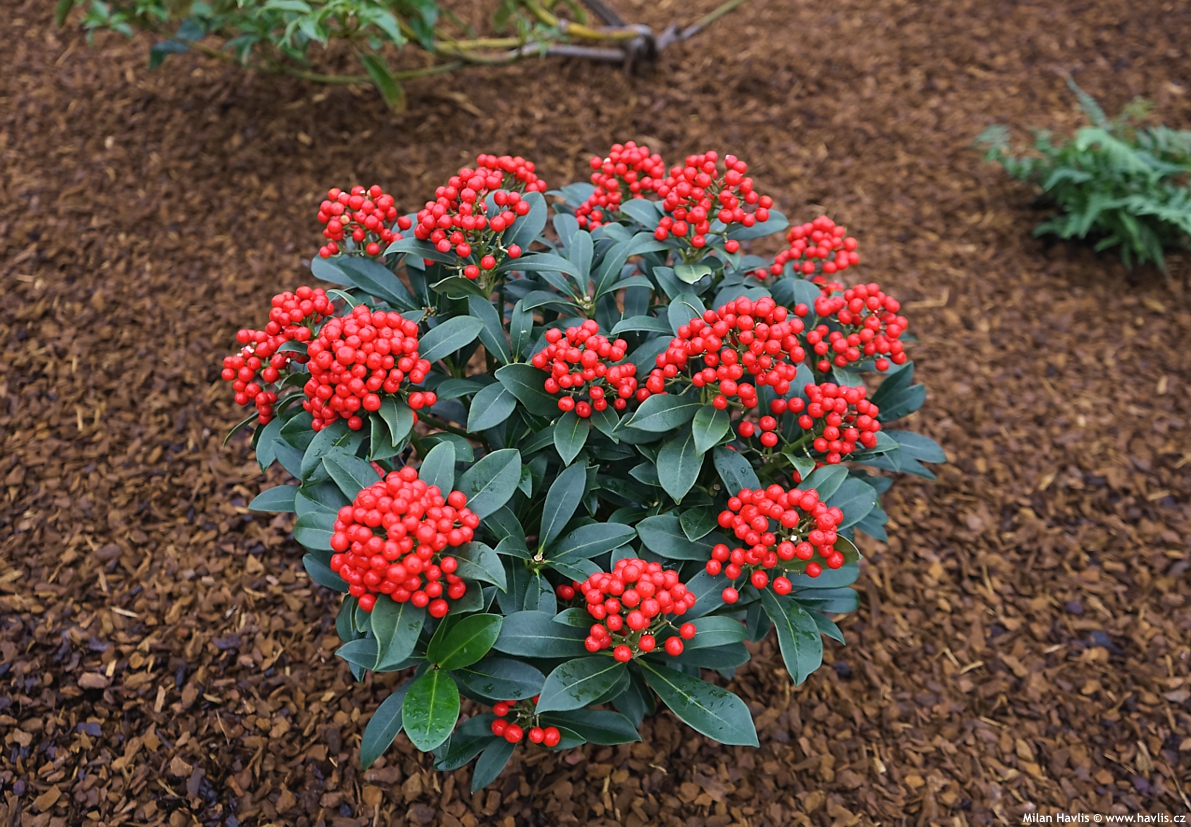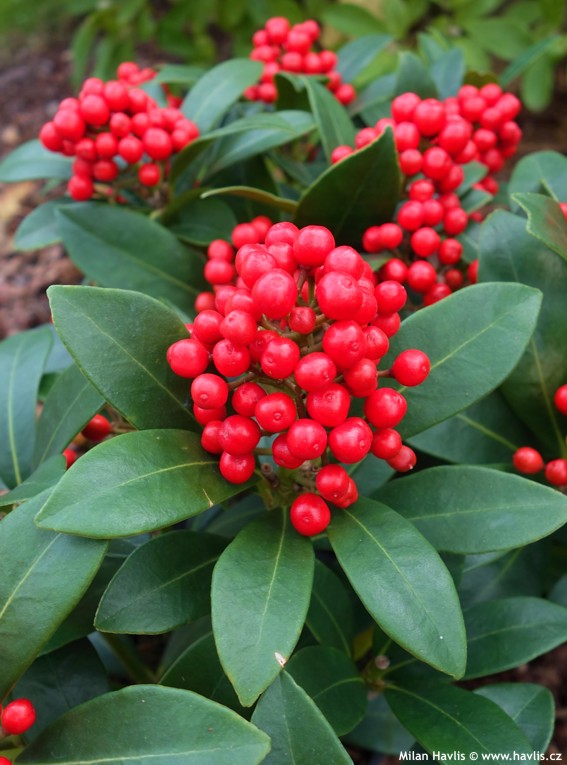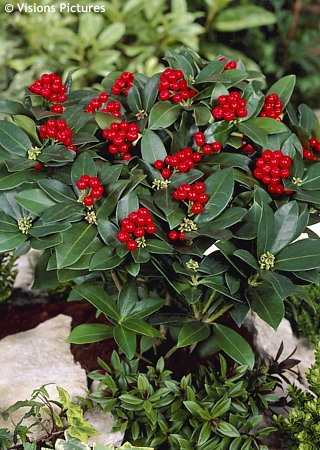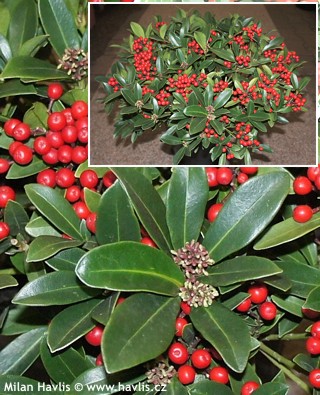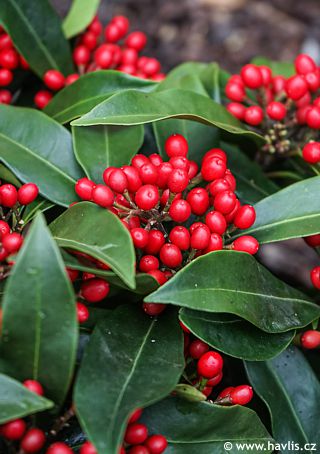Skimmia japonica 'PABELLA' Japanese skimmia


Skimmia
Skimmia is a small, evergreen shrub from Japan. After the year 2000 there has been a number of new varieties which are still being tested for stability of their featured characteristics. The aim is to select plants distinctly different from the species. In 2017 a new introduction gained attention and won the main award at Flora Holland Glazen Tulp. Its was named Pabella. It is a natural female mutation of male variety Rubella and was found in the nursery of Roland van der Werf in the Netherlands.
Pabella is a compact, slow growing, female skimmia variety producing tiny fragrant flowers in early spring, which are followed by small, spherical, red and very glossy fruit if pollinated by a male variety (e.g. Rubella). Leaves are evergreen, leathery, narrowly elongated, deep green, and glossy. The shrub is very pretty, neat, and sturdy, not prostrate or procumbent like some older female varieties.
If you plant it well you needn’t look after it any longer except for occasional watering in dry spells. There are a few rules you have to follow if you want your skimmia look perfect: the soil has to be always moist but extremely well-drained, acidic (add peat), light (add leaf mould), and most of all humus-rich. The best location is dappled shade or even deep shade (shady back of your house or under thick canopies of tall trees). When leaves turn pale or even yellow the plant suffers from too much sun or water, or too little nutrients in the soil. Skimmia is tolerant of atmospheric pollution. All parts of the plant are toxic. It is hardy to about -27°C (USDA zone 5b) and on protected sites without sunlight it withstands cultivation in outdoor containers.
Last update 28-10-2017

































